Journey to the West: Exploring the Classical Tale's Themes and Influence
By DocuMyths2 | Feb 18, 2025"Journey to the West" is one of the most celebrated works of Chinese literature, combining adventure, philosophy, and humor. This epic tale follows the journey of the monk Tang Sanzang as he travels to India to retrieve sacred texts, accompanied by extraordinary companions, including the formidable Monkey King. This blend of mythology and moral teaching engages audiences and has inspired numerous adaptations over the centuries.
The novel's rich storytelling captures a diverse array of themes, from the struggle between good and evil to the quest for enlightenment. Through its unique characters and their individual arcs, it offers insights into human nature and spirituality. Readers will find that "Journey to the West" is not just a story of travel, but a profound exploration of life's challenges.
With its layers of symbolism and historical context, the narrative continues to resonate today. Understanding its significance provides a deeper appreciation for not only Chinese culture but also its impact on global literature.
Key Takeaways
- The tale features a monk and his three supernatural companions on a quest for sacred texts.
- Themes of enlightenment and human nature are central to the story's narrative.
- "Journey to the West" has significantly influenced literature and adaptations worldwide.
Authorship and Literary Background
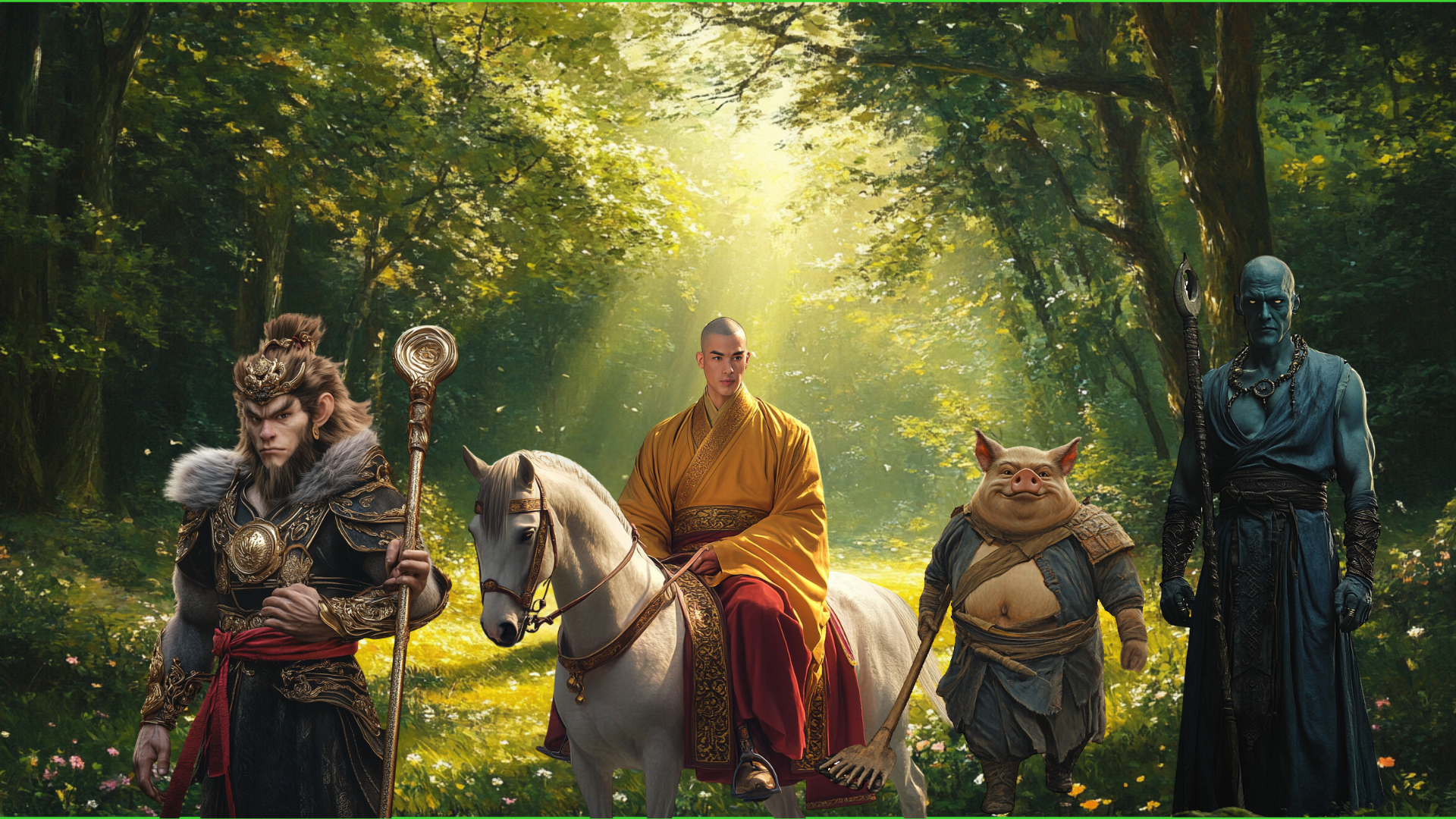
"Journey to the West" is traditionally attributed to Wu Cheng'en, a Ming Dynasty novelist. The work was completed in the 16th century and is considered one of the Four Great Classical Novels of Chinese literature.
The narrative blends historical fiction, mythology, and Buddhist philosophy. It recounts the pilgrimage of the monk Tang Sanzang to India to obtain sacred texts.
While Wu Cheng'en is credited as the primary author, other influences exist. Earlier versions of the story stem from oral traditions and various texts, including the "Record of the Western Regions."
The work features a rich cast of characters, including the monk Tang Sanzang, the Monkey King Sun Wukong, Zhu Bajie Pigsy, and Sha Wujing. Each character represents different virtues and flaws, contributing to the novel's themes.
The style of "Journey to the West" reflects a mix of satire, adventure, and allegory. Its humor and moral lessons resonate with audiences across centuries.
This novel has inspired countless adaptations in various media, including film, television, and opera. Its enduring popularity showcases its significant cultural impact both in China and globally.
Main Characters
The main characters of "Journey to the West" each possess unique traits and roles that contribute to the narrative's richness. Their interactions and individual journeys highlight themes of redemption, loyalty, and the quest for enlightenment.
Sun Wukong
Sun Wukong, also known as the Monkey King, is a central figure in the story. Born from a stone, he possesses extraordinary powers, including superhuman strength and the ability to transform into various forms. His mischievous nature leads him to rebel against the heavens, resulting in his imprisonment under a mountain.
Despite his rebellious past, Wukong's journey towards enlightenment plays a vital role in the narrative. He becomes a loyal protector of Tang Sanzang, demonstrating a complex blend of mischief and loyalty. His magical staff, the Ruyi Jingu Bang (如意金箍棒) , showcases his strength and adaptability.
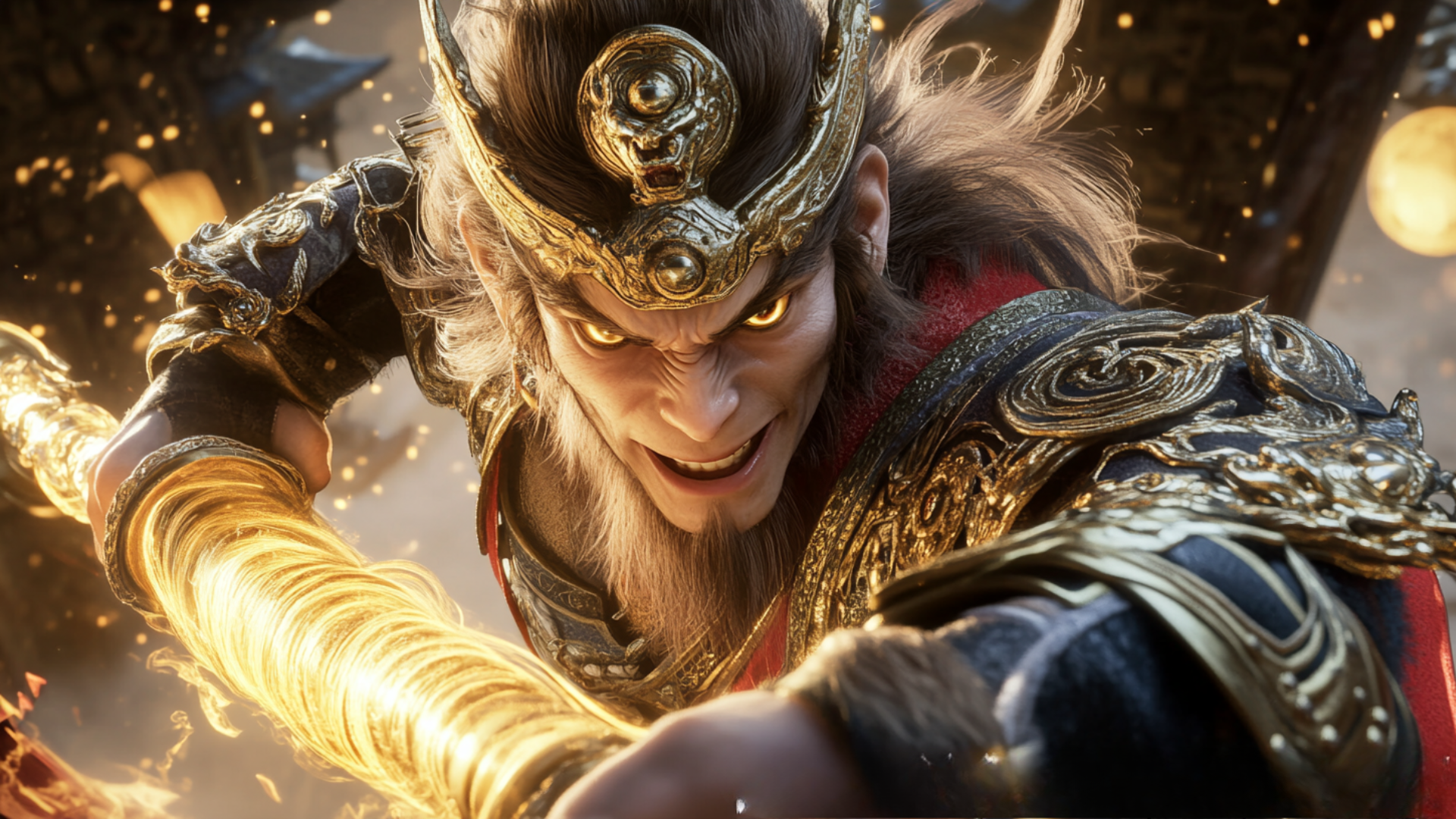
Tang Sanzang
Tang Sanzang, a monk, is a pivotal character on the journey to retrieve sacred Buddhist scriptures from India. His devotion to Buddhism drives the quest, as he seeks to bring wisdom and enlightenment back to China. He embodies discipline, morality, and perseverance, often serving as the moral compass for the group.
Throughout the journey, Tang Sanzang's faith is tested by numerous adversities. He remains calm and resolute, often praying for guidance and strength. His leadership and compassion are crucial in managing the diverse personalities of his companions.
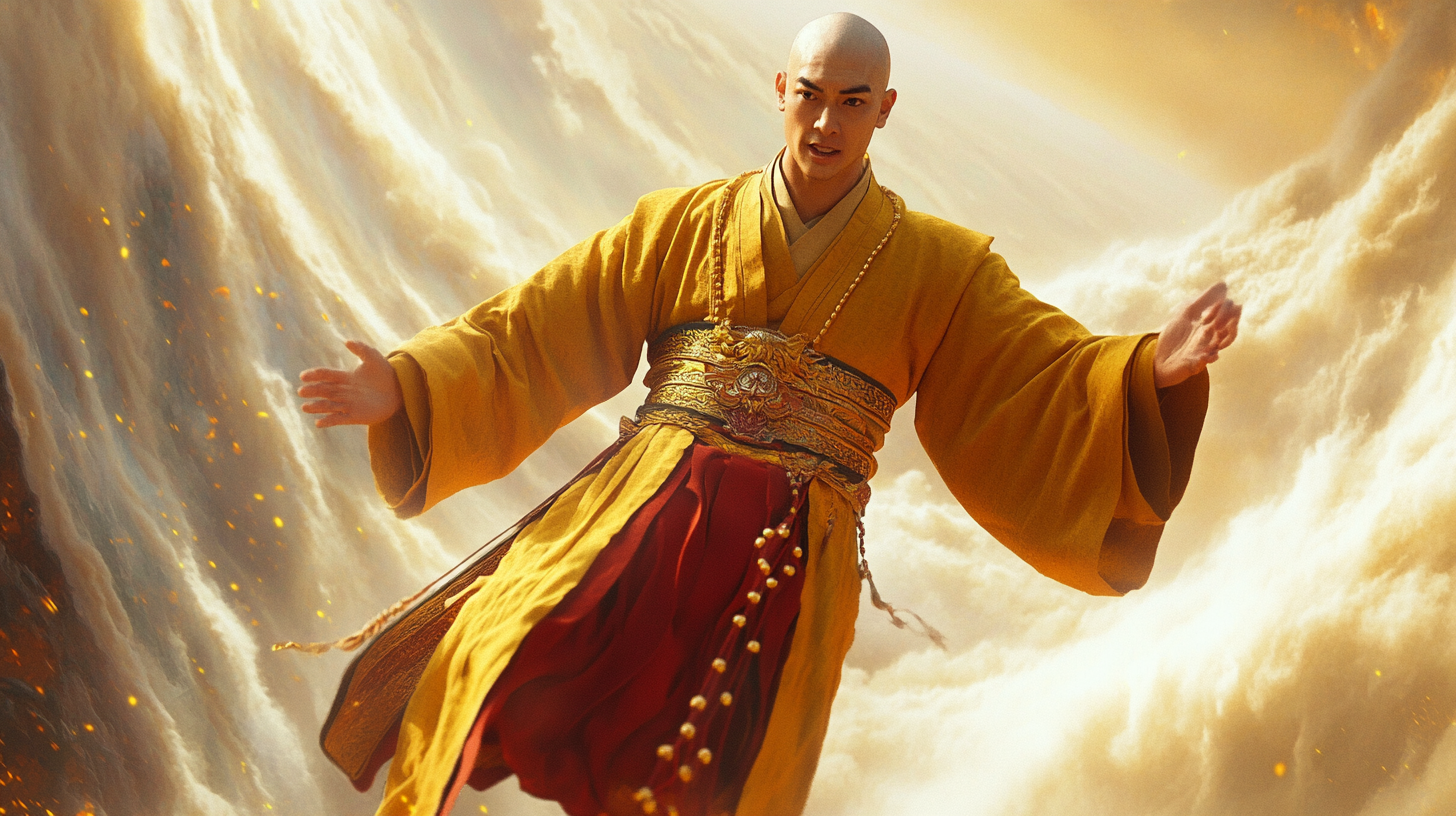
Zhu Bajie
Zhu Bajie, also known as Pigsy, is a half-human, half-pig creature who adds humor and relatability to the group. His gluttonous nature and love for comfort often create tension, but he also exhibits bravery when the situation demands it. Bajie's character represents a balance between earthly desires and spiritual aspirations.
Despite his shortcomings, Zhu Bajie's loyalty to Tang Sanzang remains steadfast. He is often seen as a comic relief character but also has moments of insight that contribute to the group's dynamic. His interactions with other characters deepen the exploration of human flaws.

Sha Wujing
Sha Wujing, or Sandy, is a lesser-known character who serves as the group's stabilizing force. Formerly a man-eating demon, he redeems himself through his unwavering loyalty to Tang Sanzang. He displays a calm demeanor and is a skilled fighter, often acting as the protector during dangerous encounters.
Sandy's past as a river ogre informs his desire for redemption. He represents the theme of transformation and the possibility of change. His quiet strength contrasts with the more flamboyant personalities of Sun Wukong and Zhu Bajie, providing balance to the group.
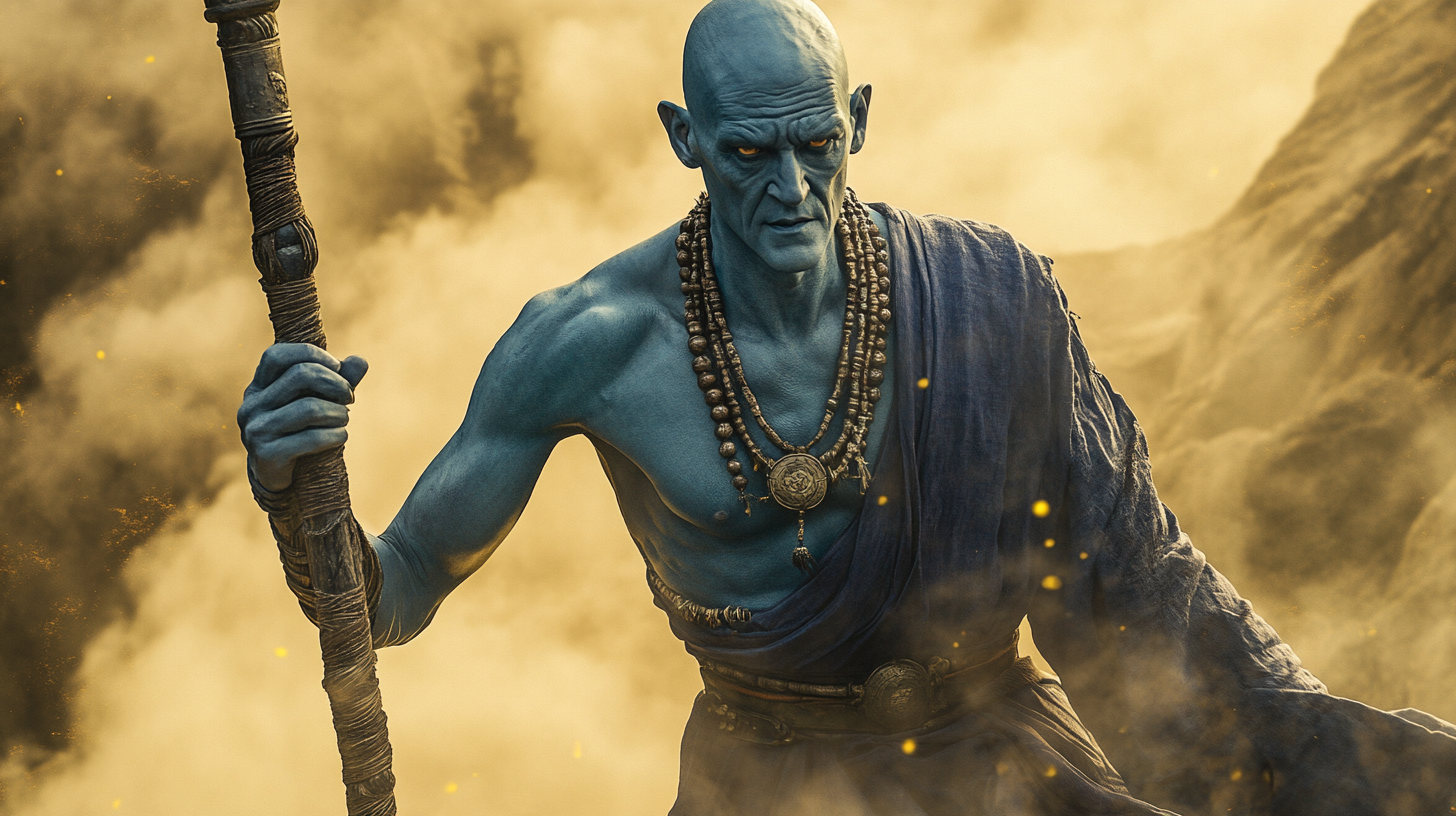
Plot Overview
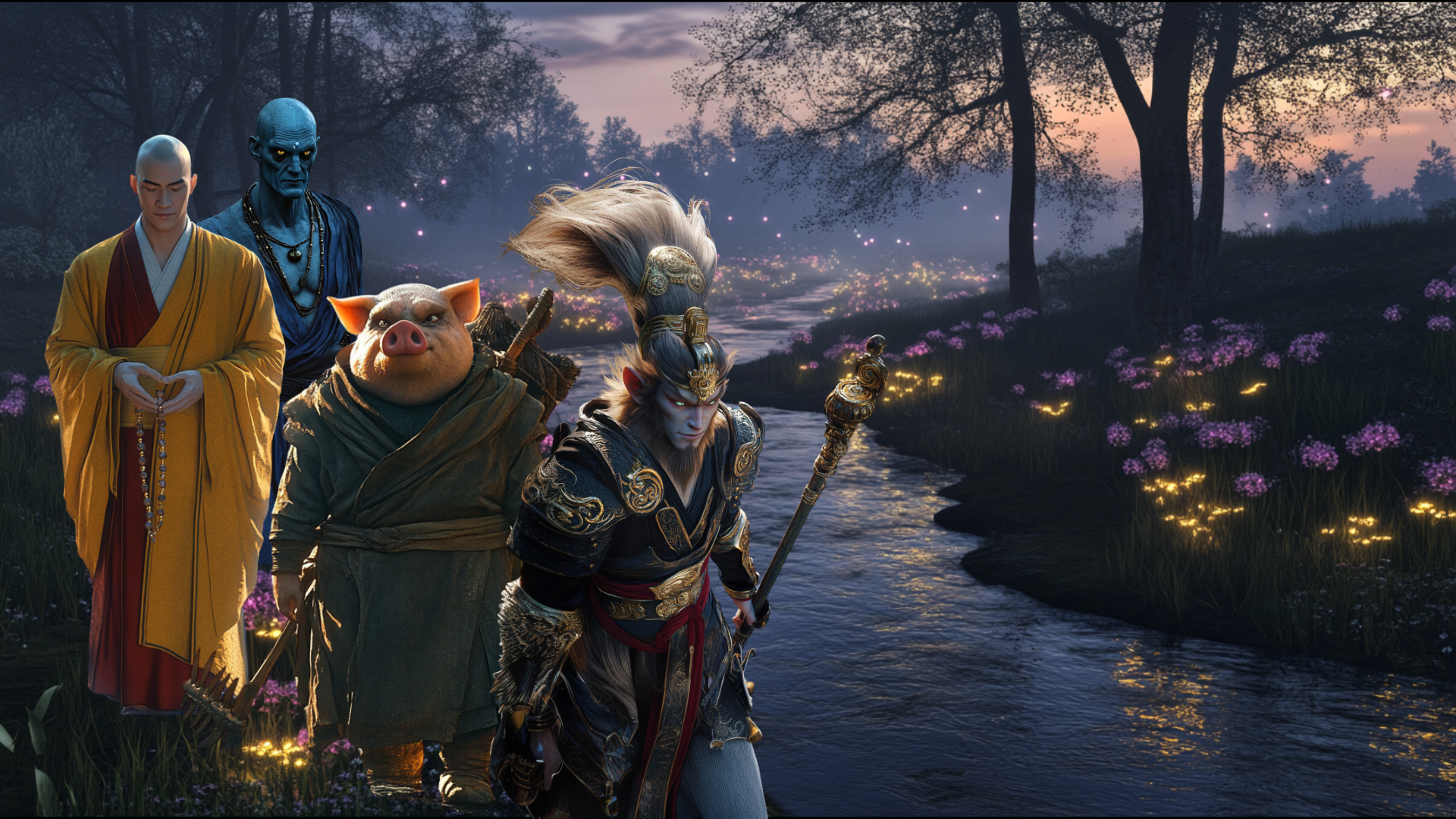
"Journey to the West" follows the adventures of Tang Sanzang on a pilgrimage to retrieve Buddhist scriptures. His journey is essential for spreading Buddhism across China.
Tang Sanzang is accompanied by four protectors:
- Sun Wukong (the Monkey King): A powerful and rebellious figure with supernatural abilities.
- Zhu Bajie (Pigsy): A comical, gluttonous character with a pig’s head.
- Sha Wujing (Sandy): A quiet and loyal monster that aids the group.
- White Dragon Horse: The transformed dragon prince who serves as Tang Tang Sanzang's steed.
The narrative unfolds as the group faces various demons and obstacles. Sun Wukong often takes the lead, using his cleverness and strength.
Each character represents different vices and strengths, exploring themes of redemption and enlightenment. The interactions among them provide both comic relief and moral lessons.
The group encounters numerous challenges, including trickster spirits and tests of loyalty. Each adventure brings them closer to their goal and develops their characters.
Ultimately, the journey symbolizes the quest for spiritual truth and the importance of perseverance. The trials they face highlight their growth, showcasing how they overcome personal flaws through unity and understanding.
Themes and Symbolism
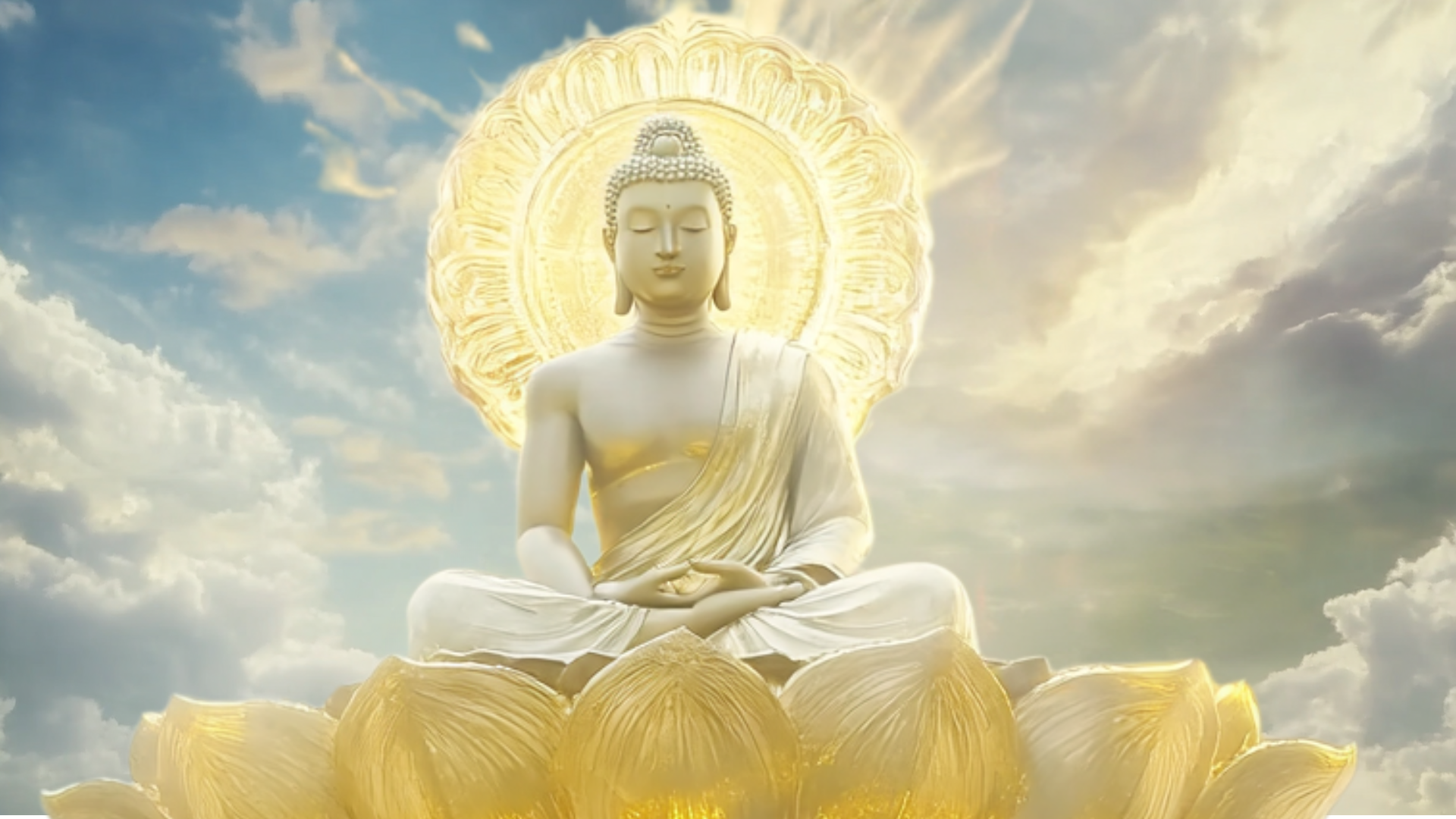
"Journey to the West" encompasses profound themes and rich symbolism that reflect cultural and philosophical ideas. Key aspects such as enlightenment, loyalty, transformation, and the struggle between good and evil are intricately woven into the narrative, offering layers of meaning to the characters' adventures.
Buddhism and Enlightenment
Buddhism serves as a central theme, emphasizing the pursuit of enlightenment through spiritual growth. The character of Tang Sanzang embodies this journey, representing the quest for ultimate truth and understanding. His travels symbolize the arduous path toward enlightenment, marked by trials and temptations.
The interactions with demons and obstacles illustrate the distractions and challenges that impede spiritual progress. Each encounter represents a lesson, guiding the characters—and readers—towards self-awareness and inner peace.
Loyalty and Betrayal
Loyalty plays a crucial role, particularly in the relationships between the monk and his disciples. The bonds formed during their journey highlight themes of trust and camaraderie. Monkey King, although rebellious, demonstrates loyalty despite his flaws, showcasing the complexity of relationships.
Conversely, betrayal manifests through various characters who oppose the protagonists. These moments raise questions about faithfulness and the consequences of disloyalty, ultimately reinforcing the importance of loyalty as a virtue in their arduous quest.
Transformation and Identity
The theme of transformation is prevalent, particularly in the character of Sun Wukong, the Monkey King. His rebellious nature undergoes a significant change through the journey. Initially chaotic and self-serving, he learns humility and purpose.
This theme also extends to Tang Sanzang and other characters as they confront their flaws. Changes in identity reflect personal growth, revealing that the journey is not just external but internal, illustrating the potential for self-improvement and understanding.
Good versus Evil
The struggle of good versus evil provides a moral framework for the narrative. Characters often embody these dualities, with the protagonists representing goodness and the demons symbolizing malevolence. This conflict drives the plot and highlights the importance of moral choices.
Each battle faced by the travelers serves to test their resolve and commitment to righteousness. Ultimately, the triumph of good over evil reinforces the belief in justice and virtue, a cornerstone of the story's philosophical underpinnings.
Cultural and Historical Significance
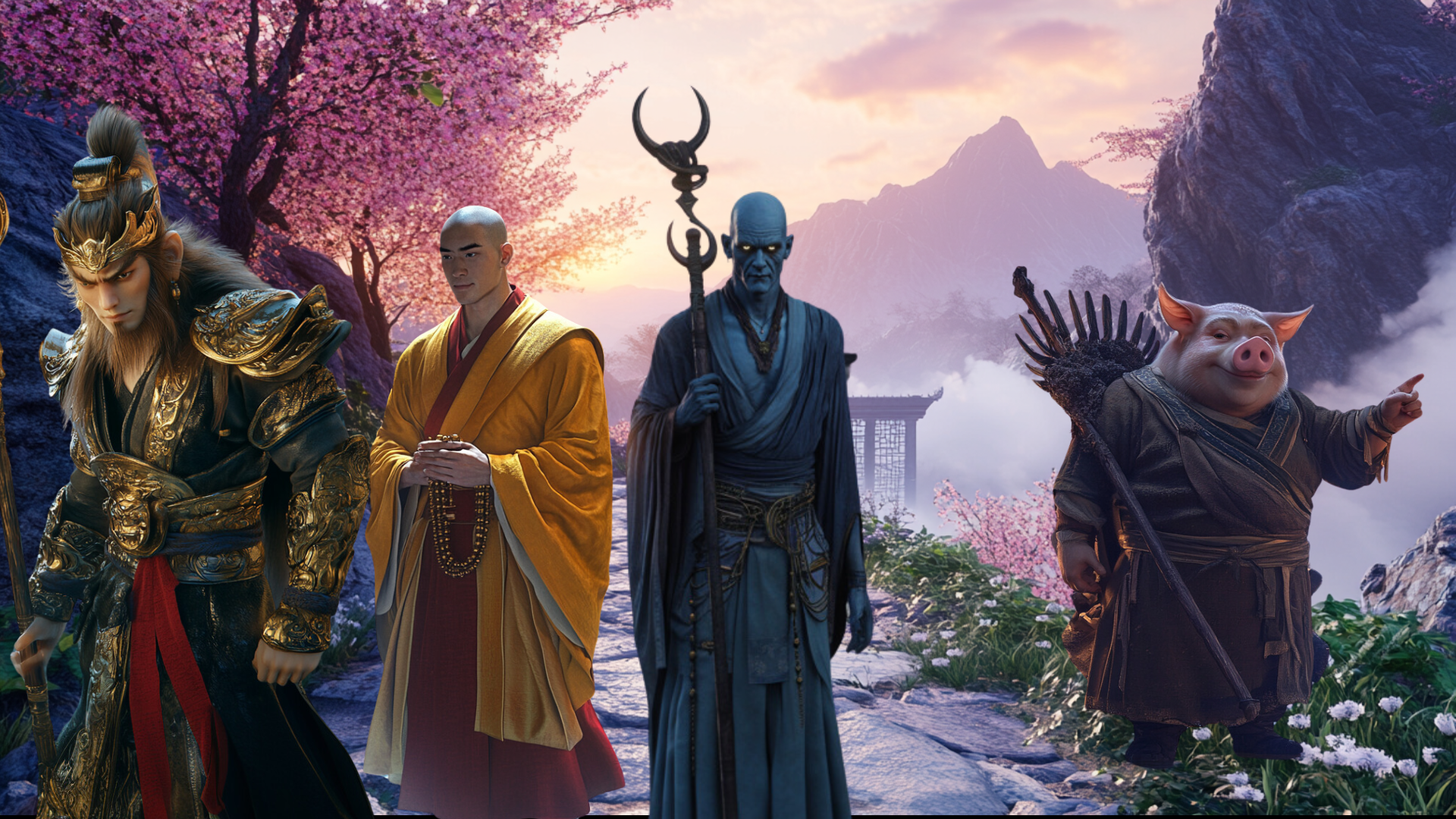
"Journey to the West" is a cornerstone of Chinese literature and culture. It blends folklore, mythology, and spiritual teachings, reflecting the rich tapestry of Chinese history.
The text highlights themes of spirituality, loyalty, and the pursuit of knowledge. Its allegorical elements resonate with many aspects of Chinese philosophy, especially Buddhism and Taoism.
The characters, such as Sun Wukong (the Monkey King) and Tang Sanzang, symbolize various human traits and journeys. Their adventures illustrate moral lessons and the importance of community in overcoming obstacles.
The novel has influenced countless forms of art, including:
- Opera: Traditional Chinese opera features adaptations that showcase its characters and plots.
- Film: Numerous films and television series reinterpret its stories for modern audiences.
- Comics and Animation: The characters have become iconic in graphic storytelling.
"Journey to the West" serves as a cultural bridge. It connects traditional values with contemporary issues, making it relevant across generations.
Scholars recognize the text's impact on both Eastern and Western literature. It encourages discussions on morality, ethics, and human nature that transcend cultural boundaries.
Many see it as a reflection of the human condition. The novel's enduring popularity underscores its significance in promoting dialogue about diverse perspectives and beliefs.
Literary Structure and Narrative Techniques
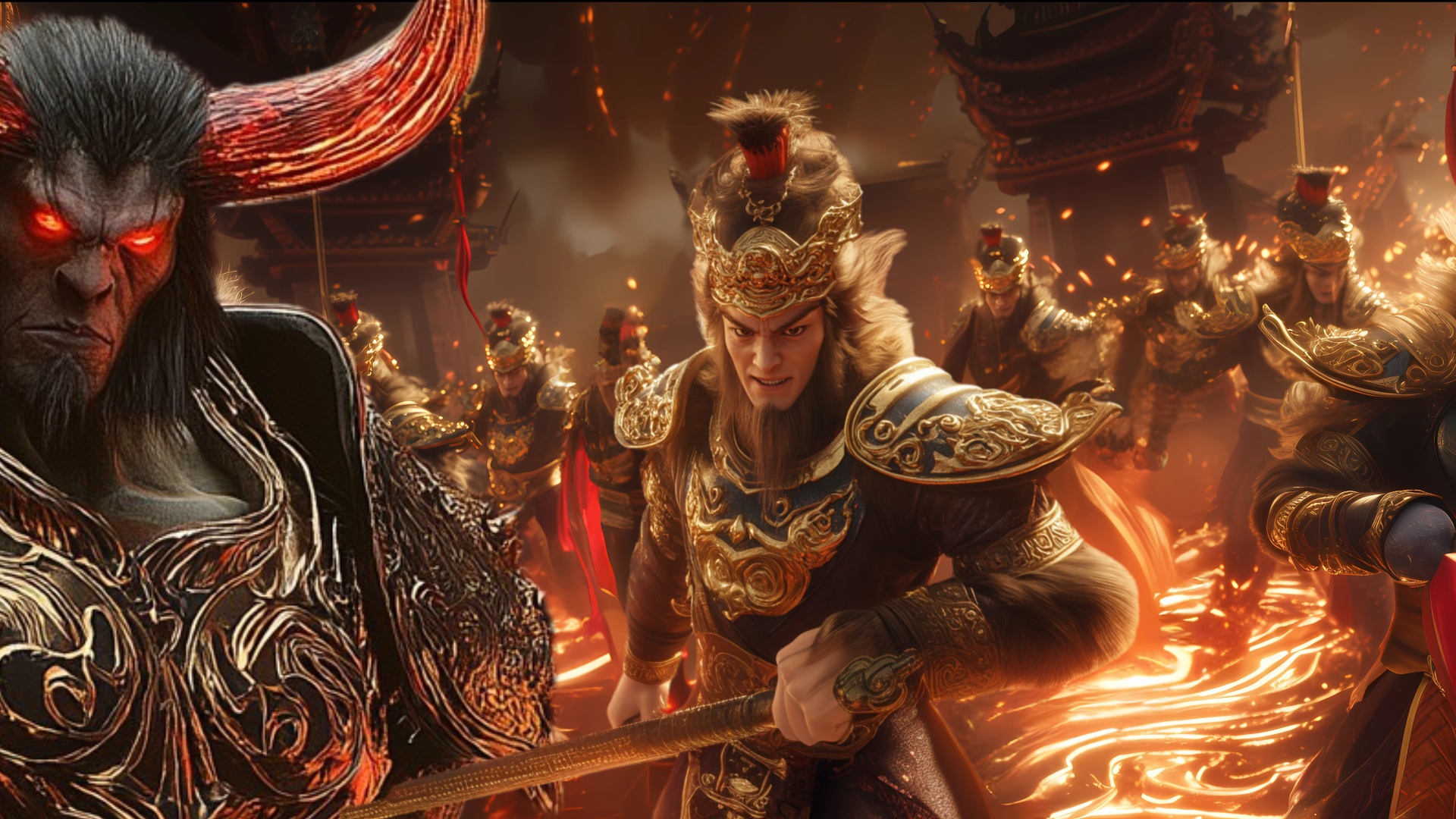
"Journey to the West" employs a rich, multifaceted literary structure. It consists of 100 chapters, presenting a combination of myth, folklore, and religious elements.
The narrative unfolds through a series of adventures led by the monk Tang Sanzang and his companions. Each episode serves both to advance the plot and to emphasize moral lessons.
Key Techniques
- Frame Narrative: The story uses a frame narrative, allowing for the exploration of various subplots.
- Characterization: Characters, such as Sun Wukong, are vividly drawn, showcasing distinct personalities and traits.
- Symbolism: The characters often symbolize different human qualities and behaviors.
The use of dialogue is prominent, adding depth to character interactions and revealing motivations. Humorous exchanges often lighten serious themes.
Structure Variants
- Chronological Order: Most events unfold in a linear timeline.
- Subplots: Various side stories enrich the main narrative, creating layers of meaning.
- Repeat Patterns: Recurring themes and motifs enhance the reader's experience.
The text utilizes poetic forms as well, interspersing verses that reflect cultural and philosophical ideas. This technique reinforces the narrative's thematic richness while engaging the reader’s imagination.
Adaptations and Interpretations
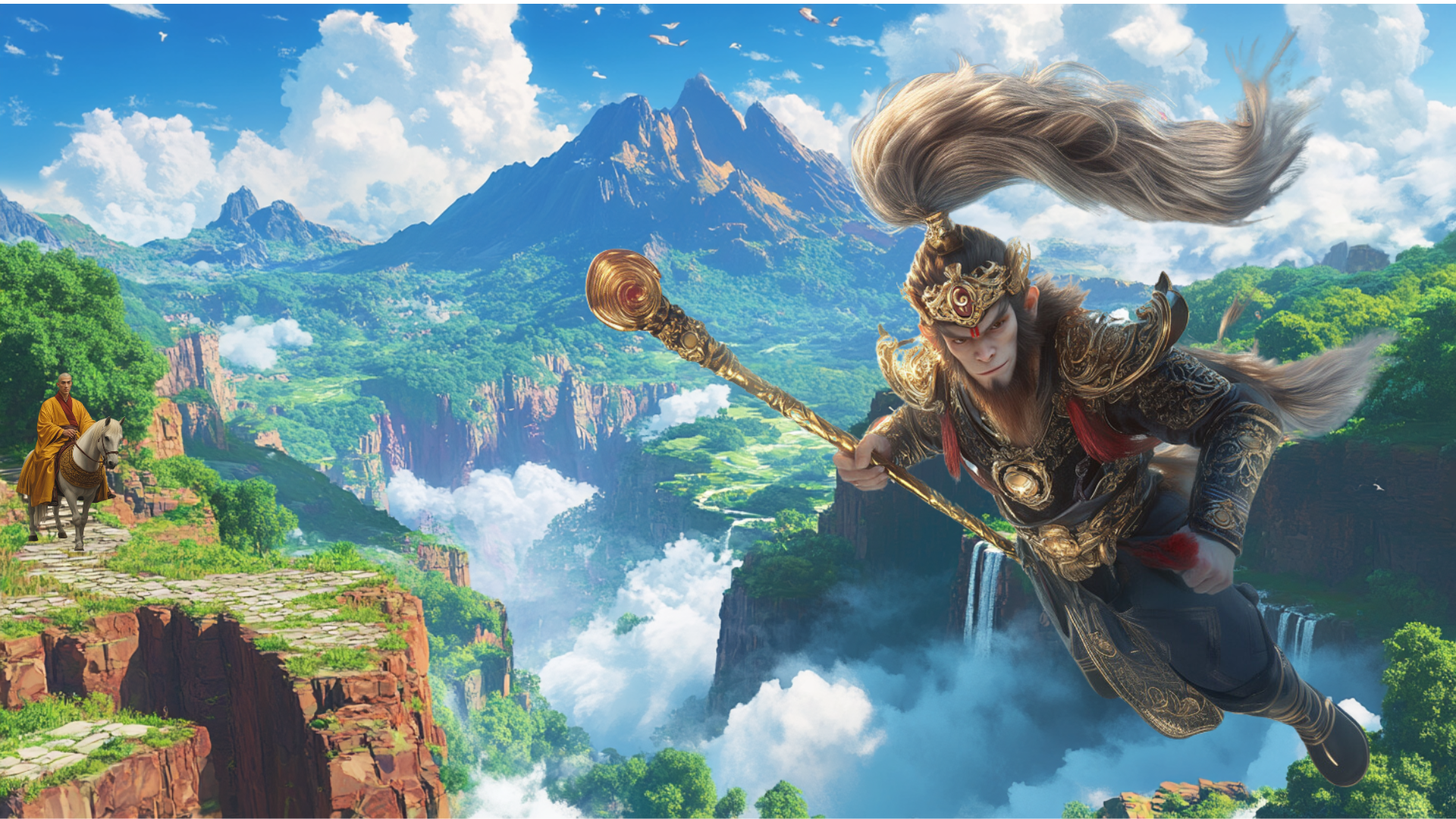
"Journey to the West" has inspired a multitude of adaptations and interpretations across various media. These adaptations highlight its enduring relevance and richness, demonstrating the story's versatility and appeal to different audiences.
Stage and Screen Adaptations
Numerous stage and screen adaptations of "Journey to the West" exist, showcasing its narrative in diverse formats. In cinema, notable films include the 2013 movie "Journey to the West: Conquering the Demons," directed by Stephen Chow, which combines comedy with traditional themes.
Television adaptations, such as the 1986 Chinese TV series, have also gained immense popularity, bringing characters like Sun Wukong to life. The 2010 animated series “The Monkey King” further illustrates the characters' modern reinterpretations. Each adaptation often reflects the cultural context of its time.
Literary Retellings
Literary retellings of "Journey to the West" delve into its themes and characters in unique ways. For instance, the novel "The Monkey King" by Timothy Mo reimagines the journey with a contemporary lens, exploring identity, spirituality, and social issues.
Other retellings, like "The Journey to the West" by Anthony C. Yu, maintain fidelity to the original text while providing insights into its philosophical dimensions. These adaptations enhance understanding of the source material and introduce it to new audiences, showcasing its multifaceted nature.
Influence on Popular Culture
"Journey to the West" has profoundly influenced popular culture, seen in various forms of entertainment. Video games like "Journey to the West: The Game" integrate aspects of the story, allowing players to explore its adventure firsthand.
Anime series such as "Saiyuki" adapt the tale's core elements into new formats, targeting younger audiences. Additionally, references appear in western media, including TV shows and comics, highlighting the story's universal themes. The adaptability of "Journey to the West" ensures its ongoing presence in global culture.
Critical Reception and Analysis

"Journey to the West" has garnered significant attention since its publication in the 16th century. Scholars and readers alike have praised its rich storytelling and complex characters.
Historical Context
The novel reflects the sociopolitical landscape of the Ming Dynasty. It engages with themes of spirituality, morality, and the quest for enlightenment.
Character Analysis
- Sun Wukong (Monkey King): Symbolizes rebellion and freedom. His development from a rebellious figure to a loyal disciple reveals deeper moral truths.
- Tang Sanzang: Represents piety and dedication. His quest illustrates the struggle between earthly desires and spiritual aspirations.
- Sha Wujing: Embodies patience and perseverance. Once a banished general, his journey reflects themes of redemption and quiet strength. He is the most level-headed of the group, providing stability and wisdom in contrast to the chaos around him.
- Zhu Bajie: Represents human weaknesses—indulgence, laziness, and desire—while still striving for redemption.Though often comical and flawed, he symbolizes the constant battle between temptation and righteousness, proving that growth is possible despite one's imperfections.
Themes
The narrative explores various themes including:
- Buddhism: The journey signifies a path to enlightenment.
- Friendship and Loyalty: The bonds between the main characters highlight personal growth and support.
- Transformation: Characters undergo significant changes, illustrating the potential for redemption.
Literary Impact
The text has influenced not just literature but also art, theater, and film. Adaptations and reinterpretations continue to resonate in contemporary culture, showcasing its timeless relevance.
Critical Perspectives
Different interpretations arise from various cultural lenses. Scholars frequently engage with its philosophical, religious, and political implications, ensuring ongoing discourse in literary studies.
Translations and Versions
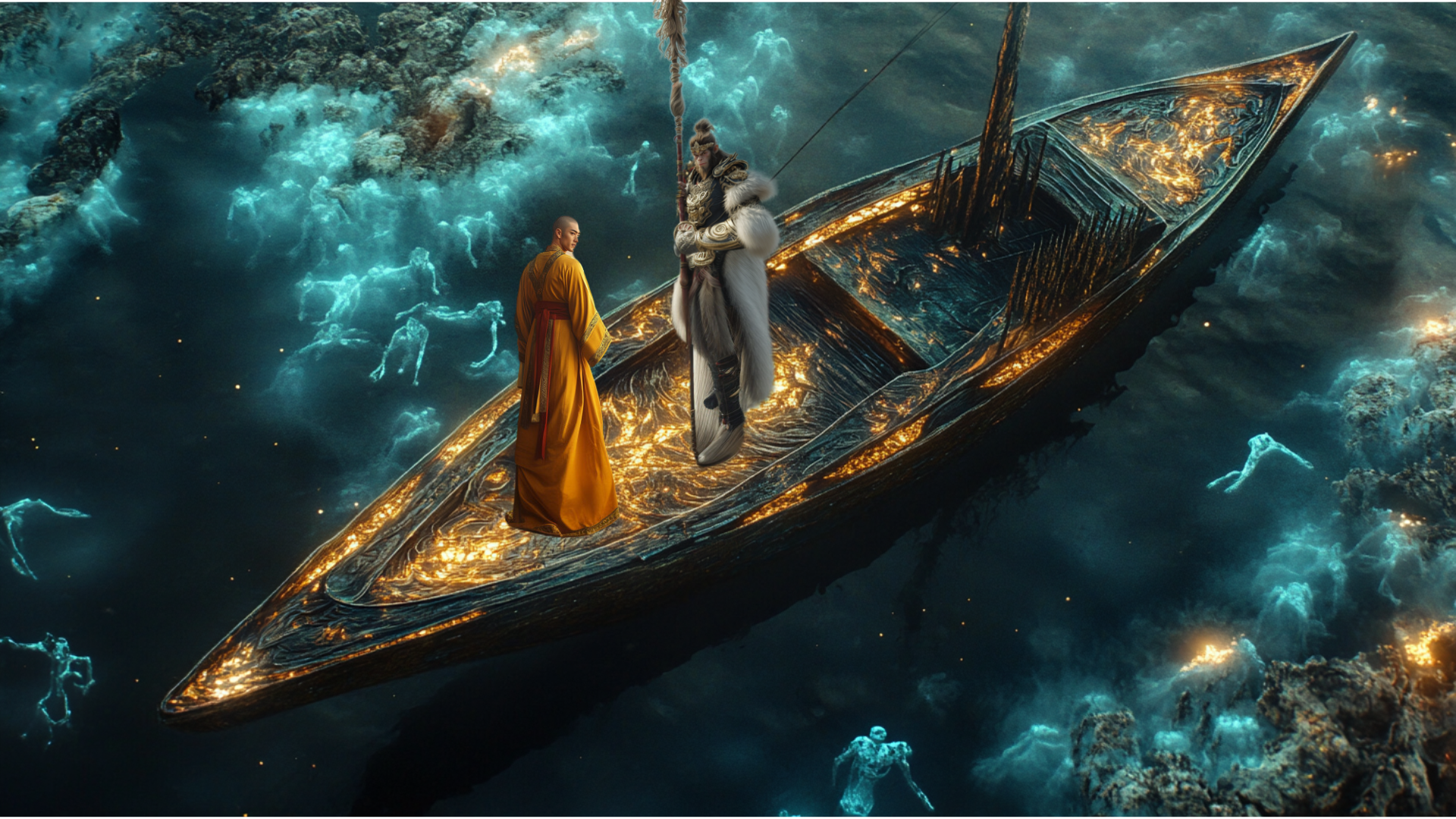
"Journey to the West" has been translated into many languages, reflecting its global appeal. Each translation brings its own nuances, affecting the reader's interpretation of characters and themes.
Notable English translations include:
Arthur Waley (1942): This version is considered a classic, known for its literary style. It focuses on the story's spiritual elements.
W.J.F. Jenner (1993): A more faithful translation that strives to capture the original text's meaning and tone.
Anthony C. Yu (1977): Yu's version is comprehensive, offering extensive commentary and context, which enriches understanding. Listed below are four volumes.
The variations in translations can impact character portrayal and sequence events. Each translator may choose to emphasize different aspects of the narrative.
In addition to these translations, modern adaptations can be found in various media, including:
- Television series
- Animated films
- Stage productions
These adaptations often reinterpret the original material, tailoring it to contemporary audiences. Each version contributes to the story's enduring legacy, making "Journey to the West" a dynamic and evolving text that continues to resonate worldwide.
Educational Use and Reading Guides
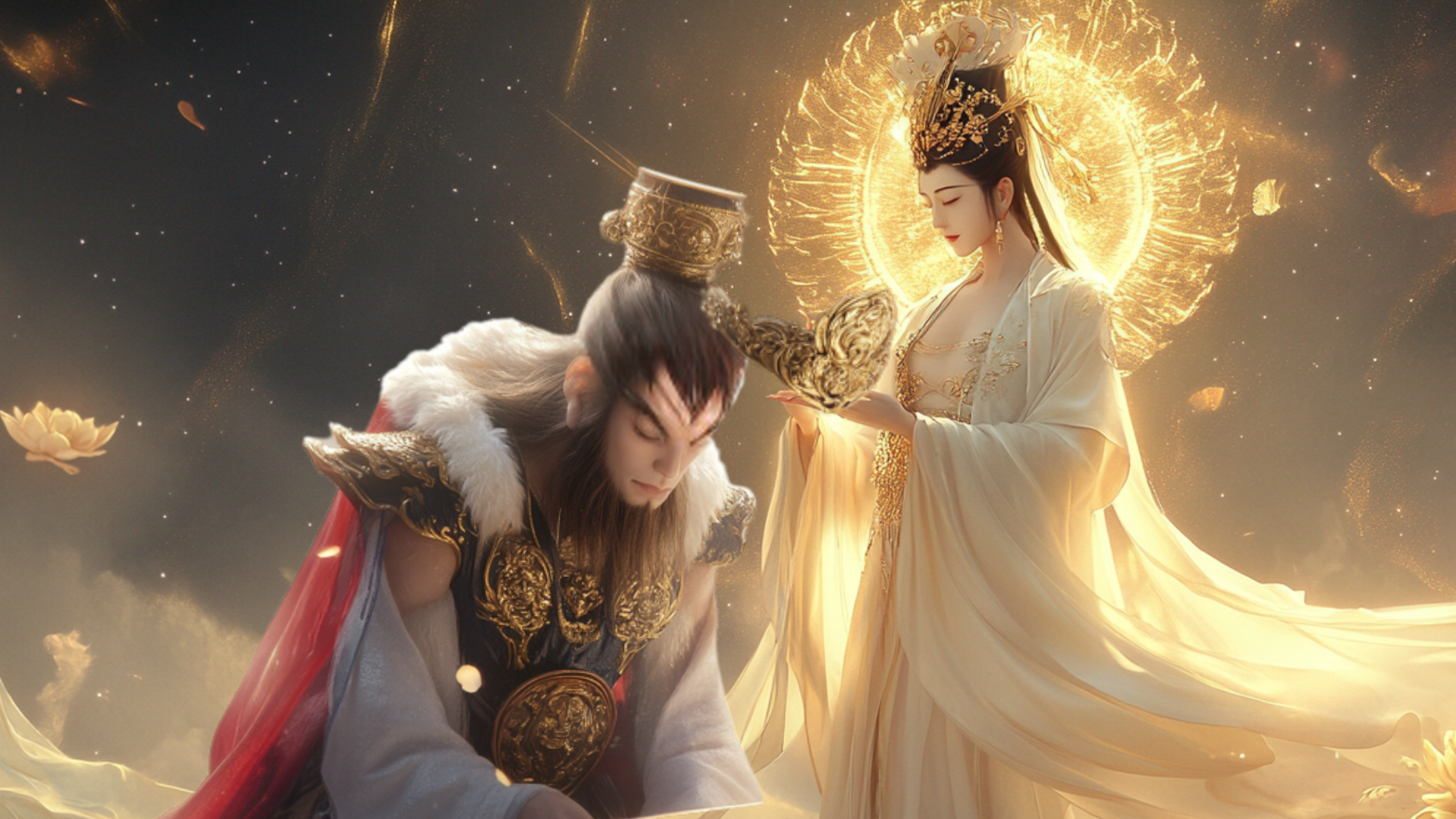
"Journey to the West" is an essential text for understanding Chinese literature and culture. It offers rich themes of adventure, spirituality, and friendship, making it a valuable resource in educational settings.
Key Educational Themes:
- Cultural Significance: The text provides insight into Chinese beliefs, practices, and folklore.
- Moral Lessons: Each character reflects various virtues and vices, encouraging critical thinking about ethics.
- Literary Techniques: The narrative uses humor, satire, and allegory, enhancing analysis skills.
Suggested Reading Guides:
Character Analysis:
- Identify main characters such as Sun Wukong, Tang Sanzang, Sha Wujing, and Zhu Bajie.
- Discuss their motivations and development throughout the story.
Theme Exploration:
- Examine major themes like loyalty, redemption, and the quest for enlightenment.
- Relate these themes to contemporary issues.
Cultural Context:
- Explore historical and religious elements, including Buddhism and Taoism.
- Discuss how these aspects influence the story and characters.
Questions for Discussion:
- What role does humor play in the text?
- How do the characters' journeys reflect personal growth?
- In what ways does the story challenge social norms?
Incorporating "Journey to the West" into curricula can foster a deeper appreciation for literature and its cultural implications. This text is adaptable for various educational levels, making it a versatile choice for readers.
Related Works and Influence on Literature
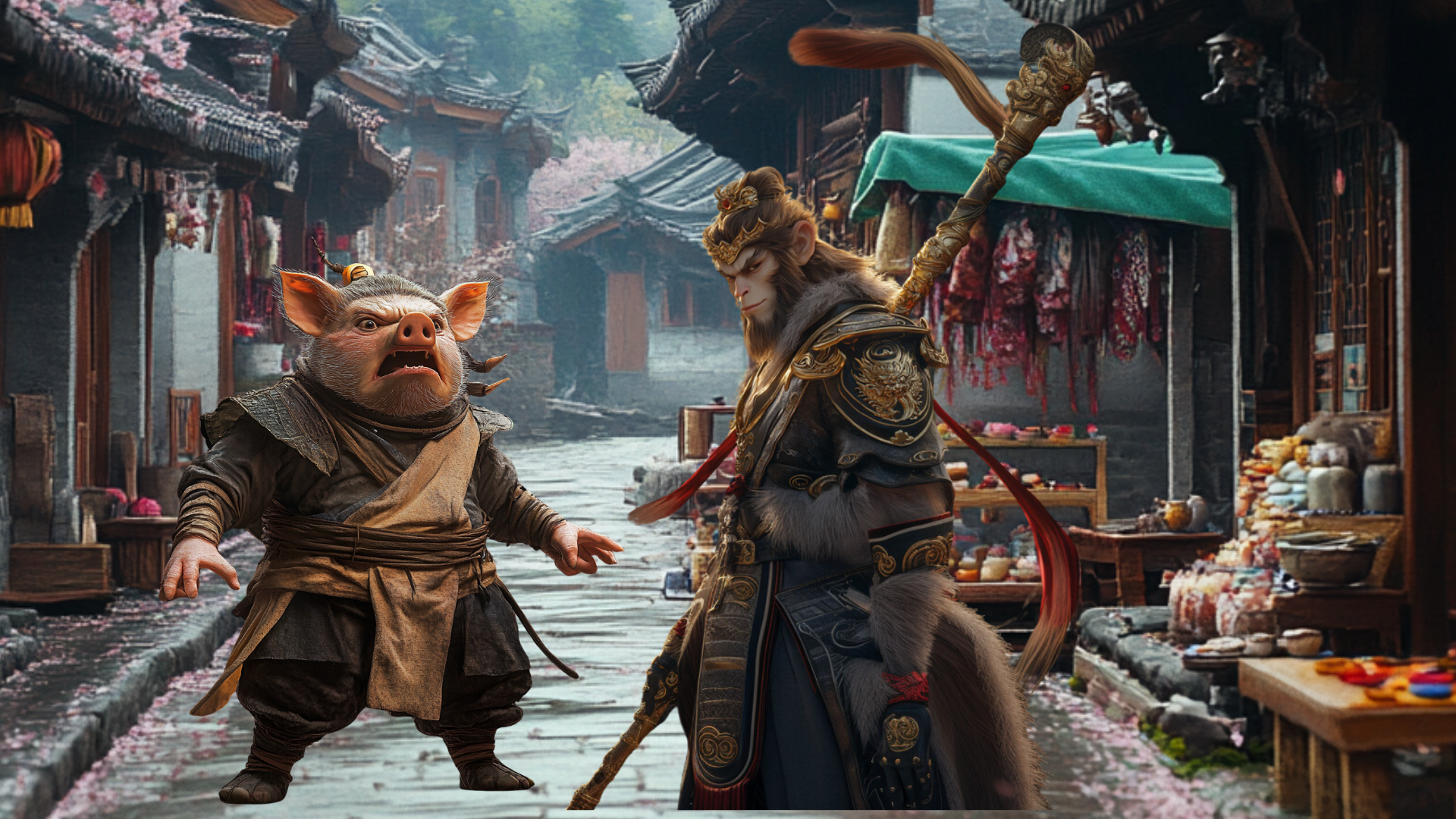
"Journey to the West" has inspired a multitude of works across various genres. Many adaptations have emerged in literature, film, and television.
Notable adaptations include:
- "The Monkey King" series in animated films.
- "Pigsy's Voyage," a modern retelling that updates the classic tale.
This classic text has also influenced authors such as:
- Alexandra David-Néel, who wrote about her travels in Tibet.
- Thomas Percy, who incorporated elements into his work.
The themes of adventure and self-discovery resonate in contemporary literature. Elements of the narrative, such as the struggle between good and evil, can be found in many modern fantasy novels.
Several literary scholars have highlighted its impact on specific literary movements. For example, its integration of folklore has enriched the genre of magical realism.
The influence extends beyond literature. It has shaped video games, anime, and even stage productions, showcasing the versatility of its themes and characters.
"Journey to the West" remains a key reference for explorations of morality, friendship, and perseverance throughout global literature. Its characters, particularly Sun Wukong, have become cultural icons, symbolizing rebellion and transformation.
If you're interested in getting the original Jpurney to the West by Wu Cheng En, please visit https://amzn.to/3WZT0X5 .





